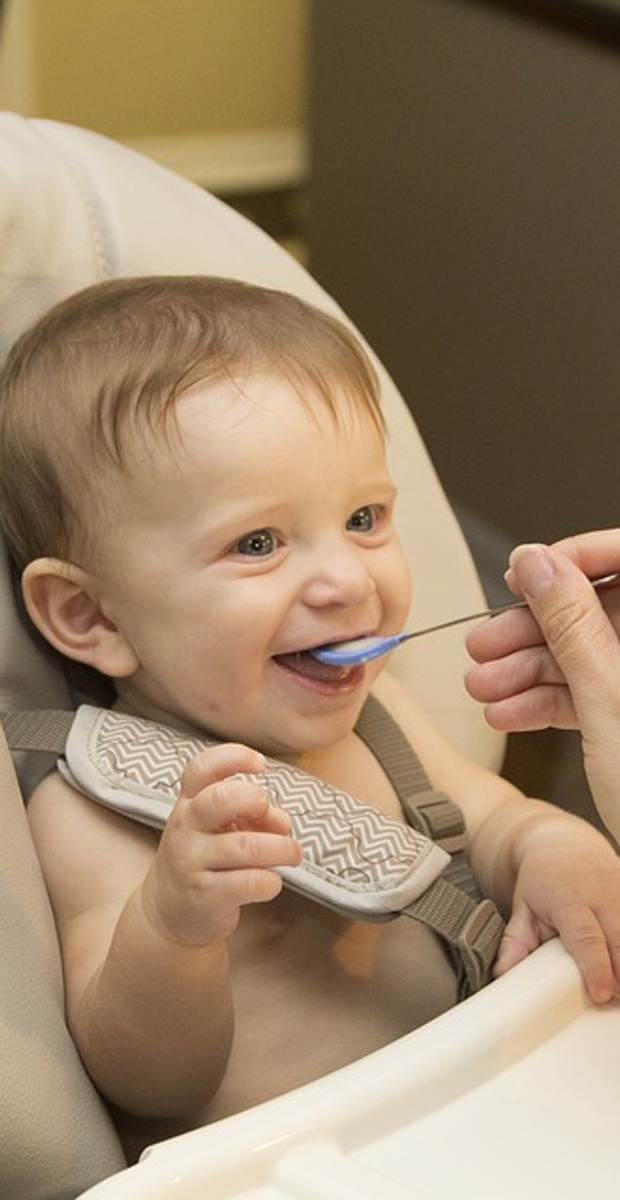The “traditional” method
With the traditional method, new foods are introduced one at a time, and a waiting period of two to three days is allowed before another food is introduced. Therefore, if the baby has an allergic reaction, it is clear which food is responsible. This method makes it easy to identify the food that is causing an allergic reaction. Apart from the priority food allergens, the risk of an allergic reaction is very low. On the one hand, the use of this method allows the child to get used to the taste of each new food that is offered. On the other hand, the number of foods being exposed to the child up to the age of ten months is limited. The exposure to different tastes and textures during the first year of life promotes the child’s acceptance of a wider range of foods.The “flexible” method
According to the flexible method, foods that are not included in the list of main food allergens are freely introduced. The Canadian Pediatric Society (CPS) suggests that it is not necessary to wait a few days before introducing a new food into a baby’s diet. According to the CPS, only food allergens should be introduced one at a time. By allowing a few days to pass before introducing a new food allergen, an allergic reaction can be better detected. This method exposes the baby to several foods during the first few months of solid food feeding. It is simpler for parents who only have to worry about introducing priority allergens irrespective of other foods. If it is suspected that the child is at risk for an allergic reaction, it is best to discuss the appropriate approach with a health care professional.Some tips for introducing food allergens
Allergic reactions can occur up to three days after exposure to the allergen and sometimes require more than one exposure to cause a reaction. Therefore, it is recommended that the new food is offered at least twice during the three-day trial period. It is preferable to introduce the new food in the morning so that the baby can be monitored for an allergic reaction in the hours that follow. Following this, each new food that has been accepted and tolerated (without an allergic reaction) should continue to be offered regularly, even when a new food is introduced. Following this pattern, within a month of starting complementary foods, the baby should be eating solid foods two to three times a day and should be exposed to a variety of foods. It is recommended to maintain the same routine each day.
Contrary to previous recommendations, it is no longer advisable to delay the introduction of priority food allergens.
If the baby shows signs or symptoms of an allergy, a doctor should be consulted as soon as possible. In the case of anaphylactic shock, go to the emergency room immediately.
